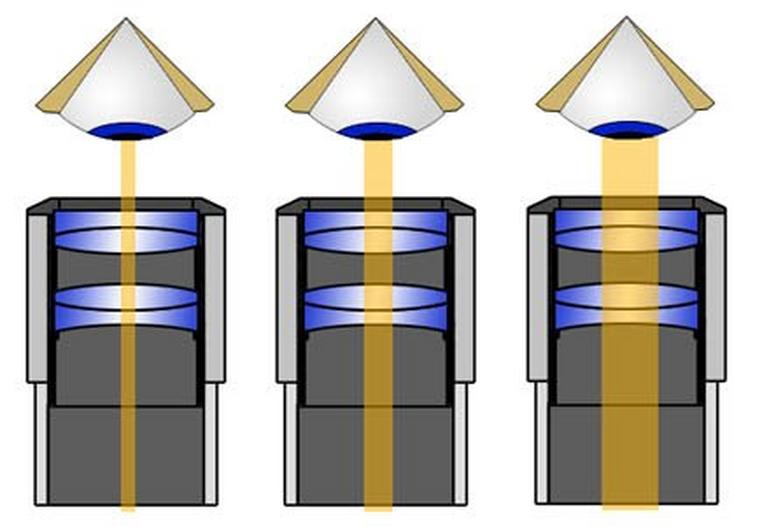Exit pupil - Binoculars
The size of the exit pupil is calculated by dividing the diameter of the objective or front lens by the magnification factor. For example, 8x42 binoculars have an exit pupil of 5.25 mm (42/8=5.25 mm).
The exit pupil is actually the small circle of light that enters the front lens and exits the ocular lens. The eye pupil dilates in dark(er) conditions so that it can let more light into the eye (just compare this with the diaphragm in a camera). If the exit pupil of the binoculars is bigger than the eye pupil, then it is easy to position the eye behind the lens. However, if the exit pupil is smaller, then you will soon notice that it is far more difficult to obtain a good image because you are constantly trying to get your binoculars into a good position. And, what is more, less light actually enters the eye than the eye wants to see. So this is certainly something to take into account!
Furthermore, it is important to give you some idea about the dimensions of our pupils. In healthy, young(er) eyes, a pupil can vary in size from about 2 to 7 mm. However, as we age, the maximum pupil size decreases to around 5 mm. In the above example, the binoculars would not be suitable for use at night or in dim conditions, whereas 7x50 binoculars with an exit pupil measuring 7.1 mm would be the perfect choice.
If you would like to see the exit pupil, just hold the binoculars about 30cm away from your eyes and you will see small circles of light in the centre of each ocular. This circle of light is in fact the exit pupil.
The exit pupil is therefore a useful indicator to show how effective binoculars will be when used in moderate light conditions. Other numbers that also provide more information and that can be compared here are the so-called ''twilight factor' and 'brightness factor''.
It is important to consider these calculations when deciding on your binoculars. All these numbers are useful because they clearly indicate the functionability and applicability of the binoculars. However, one very important factor seems to have been overlooked and that is the quality of the binoculars. Top-grade quality binoculars with perhaps lower values will render far better images and will be much finer to work with than irregular binoculars with a theoretically high level of brightness and a large exit pupil.








